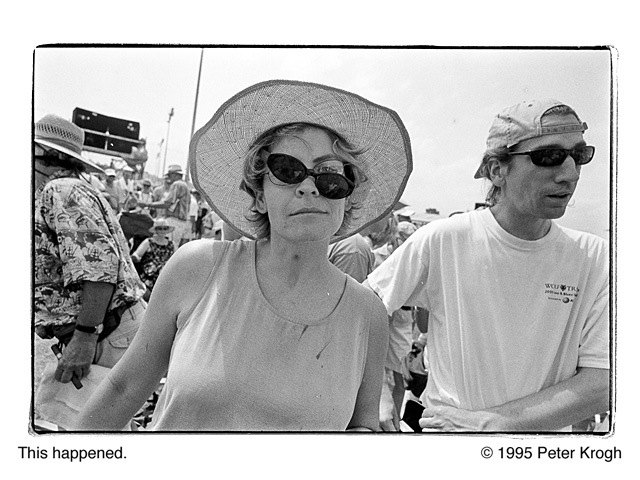Most people think about photo metadata (if they ever think at all) as information that is attached to the photo. Typically, this includes the camera information, like the time of capture or the camera and lens model. It could also include the IPTC metadata, like keywords, location tags, or author information.
But there is a new class of metadata that is increasingly important. A photo can be matched up with external information that can provide important context for the picture. GPS data is a perfect example of this. Using GPS coordinates, you can place a photo on a map, retrieve place names, and find out other characteristics.
When you add in a timestamp, it’s even more powerful. If the time and place combination shows the New Orleans Fairgrounds on the first weekend of May, you know it’s a picture related to Jazzfest. This is the promise of Big Data.
 Of course, the trick is to be able to match these things up automatically. In order to make use of Big Data, and what it can tell me about the context of my photos, I need to be able to hook the photo, or the catalog of photos, up to the database that has all the knowledge.
Of course, the trick is to be able to match these things up automatically. In order to make use of Big Data, and what it can tell me about the context of my photos, I need to be able to hook the photo, or the catalog of photos, up to the database that has all the knowledge.
Linked Open Data (video below) describes a particular kind of database. The “linked” part provide a way to link the information in a database to other data (like my photo catalog) or to applications. This is done through RDF, URIs, APIs and other acronym-based methods.
And the “Open” part means that it’s published under a (generally) free and non-revokable license, like a Creative Commons style license.
The Getty has recently released their thesaurus of Art and Architecture information as Linked Open Data. The Getty has been a real leader in smart, forward-thinking, web-based, community-focused collection management.
While Linked Open Data is not the kind of thing that most people will be able to wire up on their own, it is the kind of thing that will get incorporated into third party applications and services. And one day, as if by magic, applications will appear that seem to simply know stuff.
